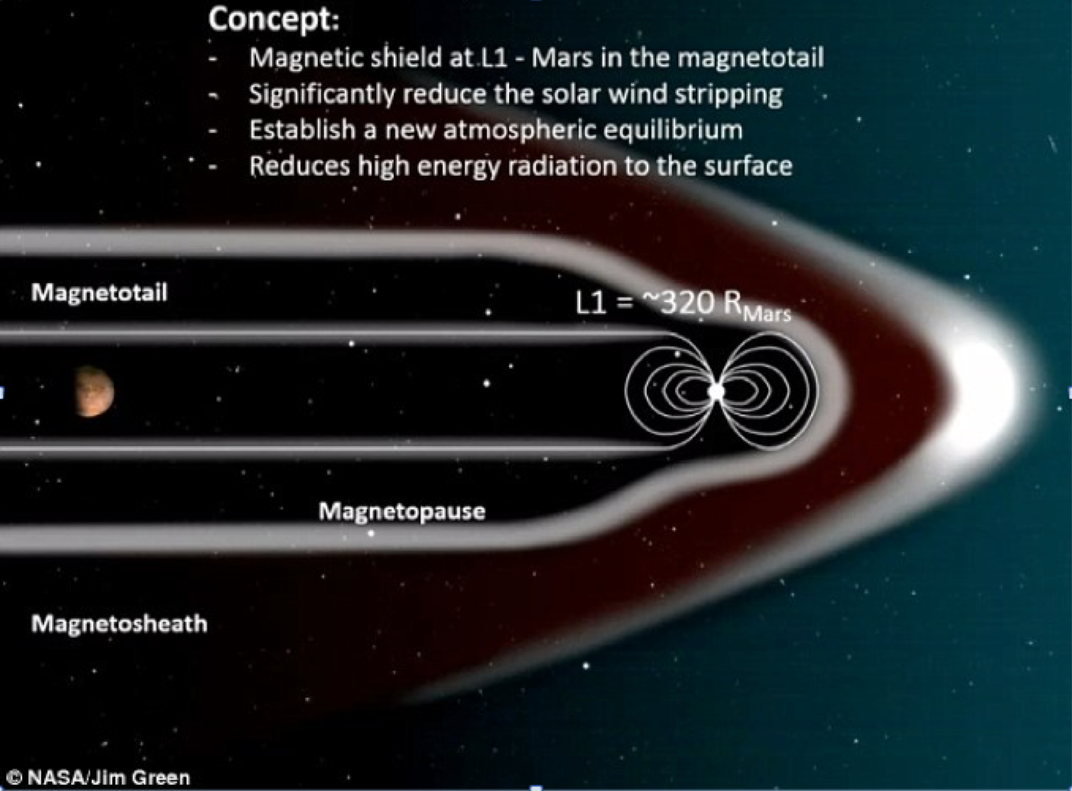Want To Make Mars Livable? Bring Back Its Magnetic Field
A novel way to terraform the Red Planet.
/https://tf-cmsv2-smithsonianmag-media.s3.amazonaws.com/filer/86/a8/86a806be-41a2-4a71-ac8a-1842de63b10c/mars_horizon.jpg)
Mars today is a cold desert, but billions of years ago it was much warmer and wetter. Why? Because back then, the planet still had a magnetic field protecting its atmosphere from erosion by the solar wind. That got Jim Green and his co-authors thinking: Why not bring the Martian magnetic field back? Green, who’s the head of planetary science at NASA, presented the idea at the recent Planetary Vision 2050 meeting in Washington, D.C.
If we were able to recreate a magnetic field for Mars, it would stop the constant loss of atmospheric gases due to solar wind interaction with the upper atmosphere. The drain of gases into space is partially replenished by outgassing of volatile elements from the Martian interior, but if it were stopped altogether, the atmospheric pressure would build up and Martian surface temperatures would increase, say Green and his co-authors.
In order to quantify the effect, they used NASA’s Community Coordinated Modeling Center to simulate a magnetic shield placed artificially at the Martian L1 Lagrange point (where a spacecraft would remain in a stable orbit). That would shield the planet from the solar wind very efficiently.

The benefits of such a large engineering project would be small at first, according to the computer simulations. They would take a while even to be observable. Eventually, though, we might see an increase in average Martian global temperatures of 4o C or more, at which time Mars would start to undergo its version of a runaway greenhouse effect. Carbon dioxide trapped in the polar ice cap would start outgassing into the Martian atmosphere, and the build-up of carbon dioxide would in turn help to melt the polar ice sheets, resulting in even more carbon dioxide and water in the atmosphere. Mars would become more Earthlike, human astronauts or colonists on Mars would be better protected, and any indigenous biosphere on Mars, if it exists, would likely welcome the change.
Placing such a shield in Mars orbit is obviously very challenging technically, but could, in principle, be done. Green didn’t provide any information on the design of such a spacecraft at the meeting, but by coincidence two of my students just turned in a term paper researching that very question. Their results suggest that generating a magnetic field as strong as Earth’s would take a solar cell array with an area of roughly 320 square kilometers.
A huge effort, yes, but not impossible. Future improvements in the technology of space construction should make such a project more viable. And there’s no particular rush, since the fruits of terraforming Mars, should we decide to undertake it, would not be achieved within a human lifetime. It would likely take hundreds, if not thousands, of years.
/https://tf-cmsv2-smithsonianmag-media.s3.amazonaws.com/accounts/headshot/Dirk-Schulze-Makuch-headshot.jpg)
/https://tf-cmsv2-smithsonianmag-media.s3.amazonaws.com/accounts/headshot/Dirk-Schulze-Makuch-headshot.jpg)